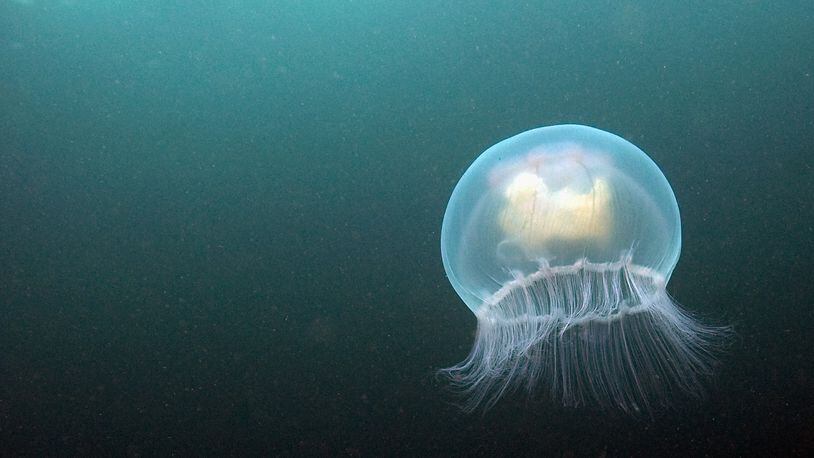- Common allergy medications could damage brain, increase dementia risk study finds
- Kelly Ripa didn't know Michael Strahan was leaving 'Live!'
- Divine sign? Indiana mom's otherworldly ultrasound picture goes viral
- Harriet Tubman on the $20: First African-American woman on US currency
- Dentist under fire for allegedly pulling all of his patient's teeth bites back
The use of chemicals to disperse oil after the Deepwater Horizon explosion in 2010 caused moon jellyfish to lose their purplish hue, change shape and die, according to a new study from Florida International University.
Conducted by the Miami-based school’s Southeast Environmental Research Center, the study found that exposure to crude oil and weathered oil did in itself did not cause significant adverse effects in moon jellyfish.
But the addition of the chemical dispersant Corexit 9500, caused changes in color, loss of tissue, irregularities in the bell shape of the jellyfish and death.
“The use of dispersant in response to an oil spill is generally regarded as the best option to reduce biological impact and protect shoreline habitats, but it comes with trade-offs,” said Gary Rand, co-author of the study and a professor in the Department of Earth and Environment.
The FIU report notes that jellyfish usually are not the focus of study when it comes to how marine ecosystems are impacted by oil because their role as consumers of prey is underestimated.
But jellyfish aren’t the only sea life impacted by the chemicals humans used to try and clean up after themselves.
Brian LaPointe, who researches seaweed and algal blooms for Florida Atlantic University’s Harbor Branch Oceanographic Institute, said he believes the dispersant used to break down Deepwater Horizon oil produced nitrogen.
That nitrogen acted as a fertilizer for sargassum, a type of seaweed, the proliferation of which has become a problem for many Caribbean islands and even along South Florida’s beaches.
"This is very serious," Lapointe said in a 2015 interview with The Palm Beach Post. "They've seen excessive amounts (of sargassum) in Bermuda, Antigua, Barbados. If tourists can't find the beach, they'll go somewhere else."
About the Author
